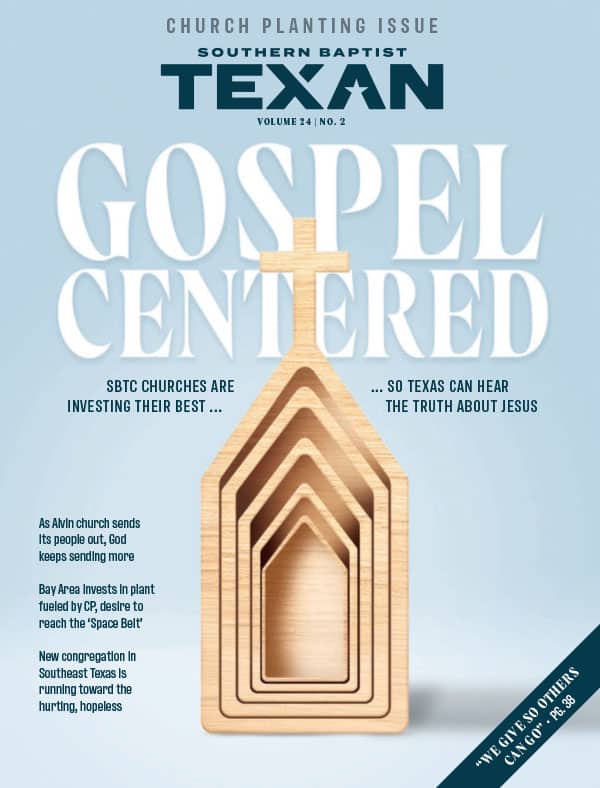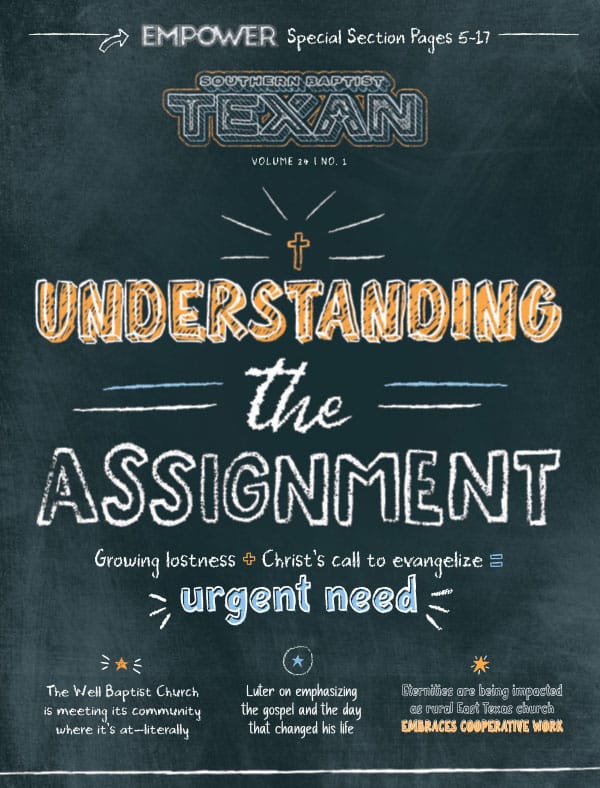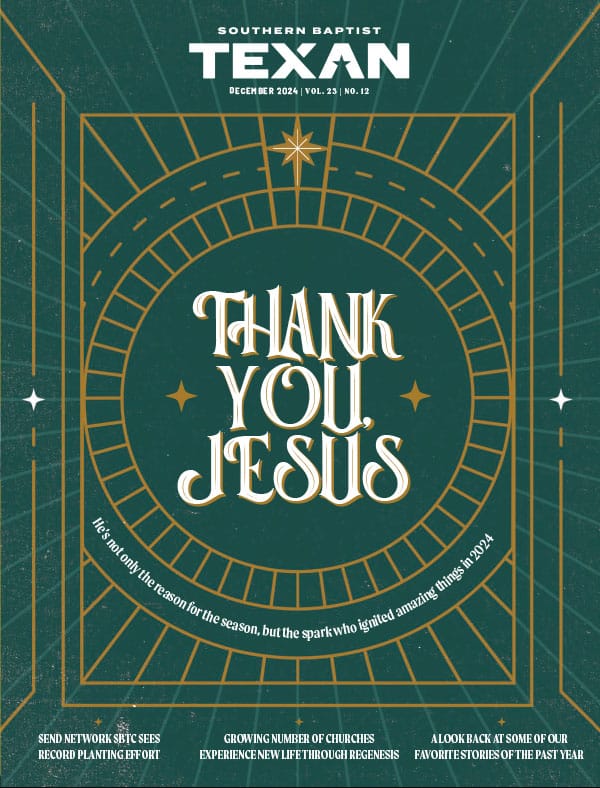|
For many Texas churches, the last few years have changed the way they communicate within the church walls and without. In that time, large and small congregations have established Internet websites, creating dynamic and helpful presences on the worldwide web. A decade ago, Texas Baptists were likely to use several methods to gain the information they needed about local churches. Telephone directories could be used by a new community resident to locate a church, yet these usually provided little more than a phone number and address. Church bulletins and newsletters often served as the only means of receiving announcements and event calendars. For other questions, phone calls to the church office might be the only available tool–and getting after-hours help could be quite difficult. Now, however, SBTC churches across the state have built homes on the Internet, providing locations that combine the functions of all these tools–and often provide other new and creative conveniences. For each church site, the purposes, features and uses differ, reflecting the diversity of SBTC congregations. For Clay Road Baptist Church in Houston, a web presence serves mostly “to provide information to visitors and members about our church,” said Jay Ghormley, CRBC’s music and administration minister, who oversees the development of the church’s site. Ghormley describes the church’s site (www.gocrbc.org) as “similar to a business website,” providing necessary information such as location, contact information and service times. For example, on Clay Road’s main page, one can find a short welcome and description from the pastor, information about the upcoming weekend’s services, advertisement about important upcoming church activities and an automatically updated listing of “Today’s Events” at the church. But the site also includes other helpful links for members and the community, including an extensive Prayer Ministry section. “Our prayer response form allows information to be forwarded to the church office,” Ghormley said. “[Requests] are sent to a designated e-mail address that reaches the church office and staff.” Furthermore, individuals can sign up online to receive these requests via email themselves, allowing them to serve as “prayer warriors” from across town or across the nation. Clay Road also provides a unique “Visitor Feedback” page on its site, which Ghormley describes as “basically an online version of the guest information form” in the church’s bulletin. The form allows recent worship service visitors to record their impressions of the church, and this information is sent directly to staff members. While the form has been used infrequently to this point, the church hopes greater publicity will send community members to the site after their visits to the church. Johnie Murphy’s congregation, West Conroe Baptist Church in Conroe, felt the need to establish a web presence because of the growing use of computers by church members. “Because of the way technology is coming into people’s homes, they wanted to be a part of that,” said Murphy, who serves as the graphics and communications director at the church. Her job includes maintaining the church’s online locale (www.westconroebc.org). When first visiting the site, viewers access a “digital tract,” a high-tech, eye-pleasing gospel presentation “splashed” across the screen. Many church sites provide a similar evangelistic appeal within the site, although the quality of the presentation and its inclusion as the first image make the WCBC tool particularly unique. As with many of the tools used on church sites, the presentation comes from an outside source; in this case the “tract” is provided by Digitracts.com, which is partnered with the American Tract Society. While the digital gospel presentation adds to West Conroe’s site, Murphy is particularly proud of another of the site’s features. “The best thing we’ve done is to have our church calendar up there,” she said. “It is such a connection between the membership and the place and the people who work here. It’s critical.” As is clear from visiting many church sites, activity calendars are one of the primary features of churches’ websites. WCBC’s calendar is especially detailed, containing at the time of publication around 80 entries for November. The listed items range from weekly activities, such as Wednesday night meals, to special events like “Quilt ‘Til You Wilt,” an activity to be held in mid-November by the church’s quilting ministry. Each event listing on the calendar can be “clicked” to view times, location, a description of the activity, and someone to contact for more information. Anytime during the week, calendar items can be easily placed by anyone on the church’s staff. Few members recognize that Murphy maintains the church’s site, so it is hard for her to gauge its effectiveness consistently. This is a common difficulty for “webmasters” (who occasionally refer to themselves as “webservants” instead), because site visits and use can be hard to track. Still, Murphy sees her job as an important ministry. “[Developing the website] is my talent,” she said. “So when I’m able to express what my talent is, that gives me gratification. Whether they go to [the page] or not, it’s my job, and I’m going to do it to the fullest extent I can.” Murphy encourages churches that have a site to find a staff member or volunteer who has the time to maintain the site properly. Too often, she notes, churches “want to have a web presence, but they try to take those secretaries who are already overworked” and add the site to their list of responsibilities. “If you want to keep the site halfway up to date, you’ve got to have somebody who is allowed to spend time on it. It’s very time consuming.” But Murphy sid even churches that are strapped for resources and time can—and should—establish a useful page on the Internet. “If you only have one page, then start there,” she suggested. “As you grow, grow the site.” Often, churches find that websites provide options unavailable in other ministry venues. For the recent national and local elections, for example, West Conroe included an article on its site urging Christians to vote. “I don’t usually put articles on the front page,” Murphy said, “but it’s something I wanted visitors to see when they came.” Thus this emphasis complemented the church’s other election activities, which included aiding registration and serving as a polling location. Like many site developers, Murphy makes use of an outside source for her church’s site needs. In West Conroe’s case, a company called ChurchSquare.com provides not only “space” for the site, but tools and customer help, as well. “It’s a very user-friendly way,” Murphy said. And she encourages churches to do the same. “Find a web-hosting service that provides more of a service than just a spot,” she said. When a church uses these helps, Murphy said even those with little tech knowledge can maintain a quality page. Several SBTC churches use similar services. Southern Baptists have one helpful option in LifewayLink, which partners with Praktikos Technologies to provide help for many online Baptist organizations. However a site is designed and whatever features it contains, a church’s web presence should be seen as a true extension of its current ministry, said David Sparks, a deacon at Trinity Baptist Church of Lewisville and webmaster of the church’s online location (www.trinity-babptist.com). “The overall approach to a church website should sync with the direction and approach of the pastor and staff,” he said. “All church sites are ultimately a reflection of that church’s direction and priorities.” For Trinity, the church’s particular philosophy has led members to create a site “primarily designed for first-time visitors looking for a Baptist church in the area,” Sparks explained. “As a result, I am driven by the strong belief that the Holy Spirit will use our site as an outreach tool.” But can a church on a limited budget still create and maintain an effective website? “Absolutely,” said John Bell, who also helps oversee Trinity Baptist’s site and serves as the church’s associate pastor of music and worship. “You can have a website with a small budget,” he said, adding that prices for keeping such sites on the web have come down in recent years. Murphy agreed that a site could be maintained with limited resources. Her church pays $49 a month for the Internet space and the package includes several amenities. And Bell noted, despite any time and expense involved, an online presence is important for today’s church. “You have to have a website,” he said. “People are looking for it.” |
Month: December 2004
CHURCH TECHNOLOGY: From the country church to the megachurch, high-tech making impact
|
Kenny Orr remembers as a small boy being allowed to turn off the main switch on the control panel that powered his church’s microphones. He would watch as the bulb slowly dimmed indicating that power to the two microphones?one in the pulpit and one for the Lord’s Supper?was indeed off. Today Orr works as a job supervisor for Ford Audio-Video, laying mile upon mile of microphone cables, connecting control panels to more than 100 microphones in just one church auditorium. Churches nationwide are going high-tech when building new worship areas or retrofitting existing buildings. The trend, in part, is an attempt to draw younger, more technology-savvy congregants into the worship service, Orr said. Others are doing it because it is now affordable. Some messengers to the Southern Baptists of Texas Convention annual meeting, held in October at Prestonwood Baptist in Plano, could have been overwhelmed by the facilities (the congregations of most SBTC churches could easily fit into the 580-seat choir rehearsal hall). What SBTC messengers did not see were the approximately 25 miles of microphone wire and 30 miles of speaker wire interwoven throughout the campus to connect 120 microphones to the control panel of the 7,000-seat auditorium. Gary Nicholson, an architect with LifeWay Christian Resources, said the move to add up-to-date audio-visual aids in the auditorium is not a fad but a purposeful trend. For many young non-believers, he said, the high-tech gadgetry is a draw. The reasoning seems to be churches no longer look like traditional churches and are, therefore, less intimidating or reminiscent of what the non-believers had been trying to avoid. Nicholson said all of the new high-tech capabilities in churches speak to a younger generation, projecting an image of being relevant. “Virtually all new sanctuaries I design have projection screens,” he said. Nicholson discussed the issue of cutting-edge technology being incorporated into new and existing church facilities while he and Doug Akers manned the LifeWay Christian Resources booth at the SBTC meeting. Akers works with Nichols as a customer relations representative for church architecture. Nicholson said his organization consults with audio-visual engineers when developing the architectural schematics for a church. For larger facilities such as Prestonwood, contractors will bid for media services work. Ford Audio-Video installed the Prestonwood sound system. In its project profile for the facility, Ford Audio-Video wrote that the auditorium was “designed with a theatrical/multimedia approach to services in mind. The church’s requirements for vocal presentations, musical performances, theatrical production and visiting artists demanded a high-power full-range system providing true, concert-quality sound.” The same company designed and built the audio, video, and theatrical lighting for Phase II of the Southwestern Baptist Theological Seminary’s Leadership Development Center. Some of the amenities in the new facility include an audio recording/editing suite, lighting control and theatrical system, document cameras, and an executive conference room featuring surround sound. Projection screens, Orr said, are much more affordable and durable and are often the first “high-tech” purchase a church will make. Pastors are using projection screens to illustrate sermons or post notes via Power Point. Ackers said what he has seen are taped testimonies shown on the screens while baptism candidates prepare for services. There is even a music production company releasing videos to go with musical tracks sold to choirs. And no longer is a choir merely lit by recessed canned lighting shining from overheads, giving the ensemble an angelic glow. Manually operated theatrical lighting or preprogrammed robotic lighting produce flashes of light timed with the music to add to the worship experience. For the techies who bring PDAs complete with uploaded Bibles to church, they can also watch a real-time or delayed webcast of the worship service?as they sit in the auditorium. Sunday school classrooms can even be wired for Internet to access interactive educational materials during lessons. Of the 75-100 church projects Orr’s company contracts each year, only 20 percent of the work is for new facilities. The remainder is for retrofitting existing structures. LifeWay’s Nicholson said when churches build a new facility, such as a new youth hall, they will contract to have the existing auditorium refitted with some of the latest in multi-media equipment.
CHURCH TECHNOLOGY: Lewisville church finds value in website
CHURCH TECHNOLOGY: Some churches create ministry-specific sites
|










